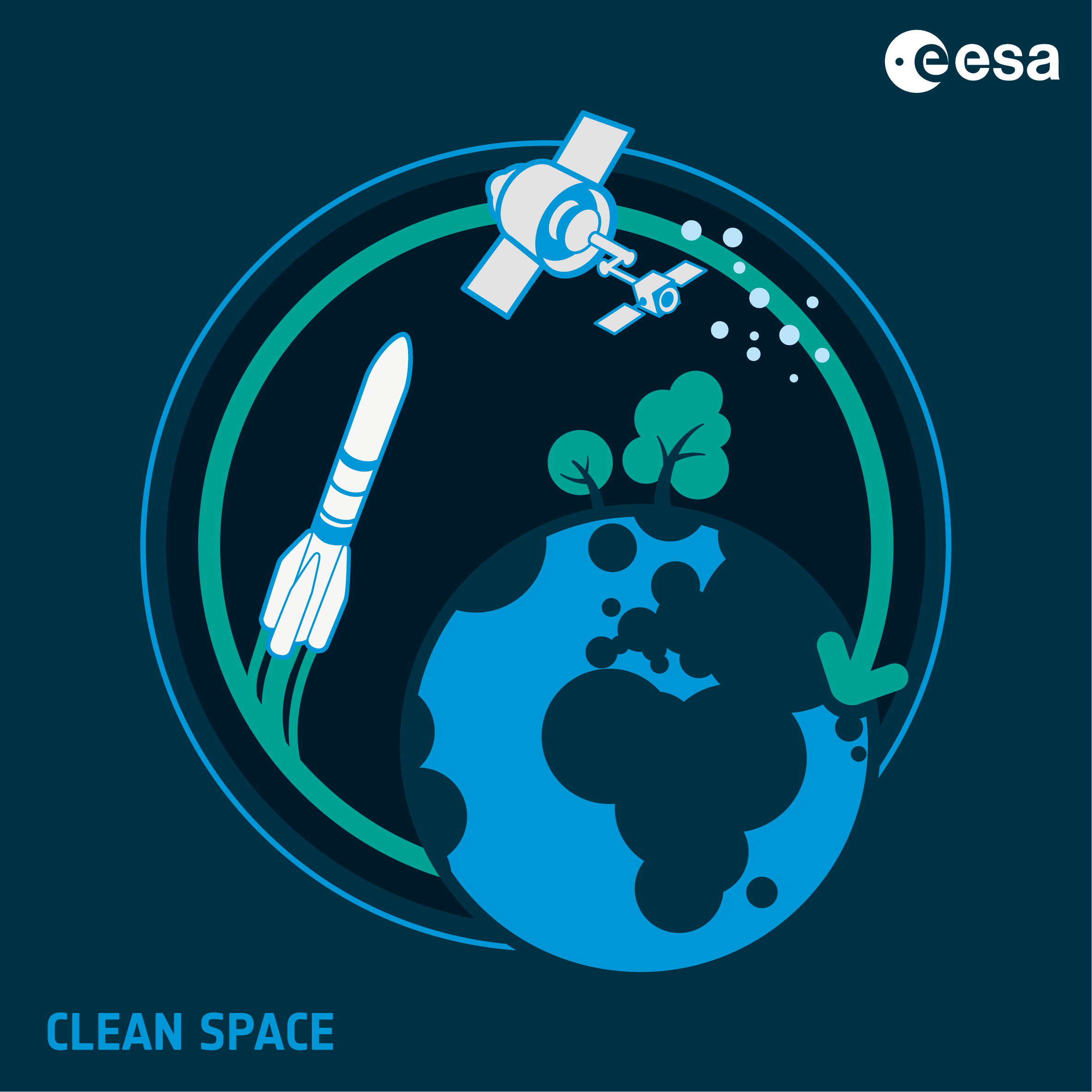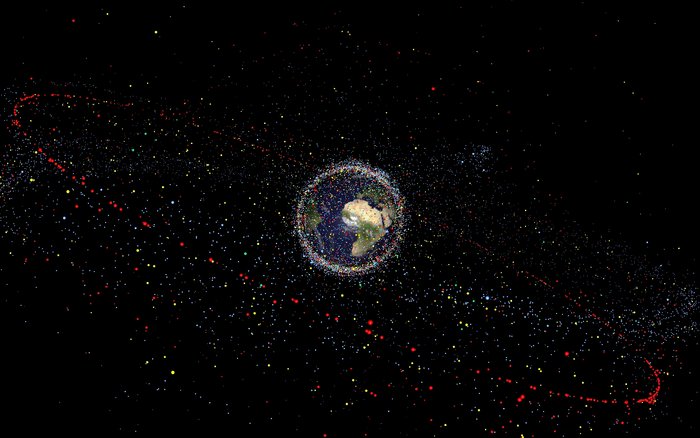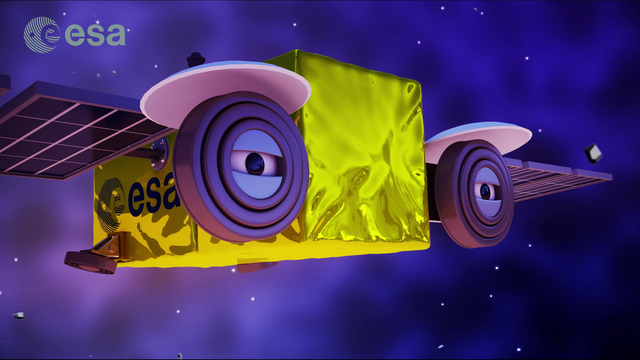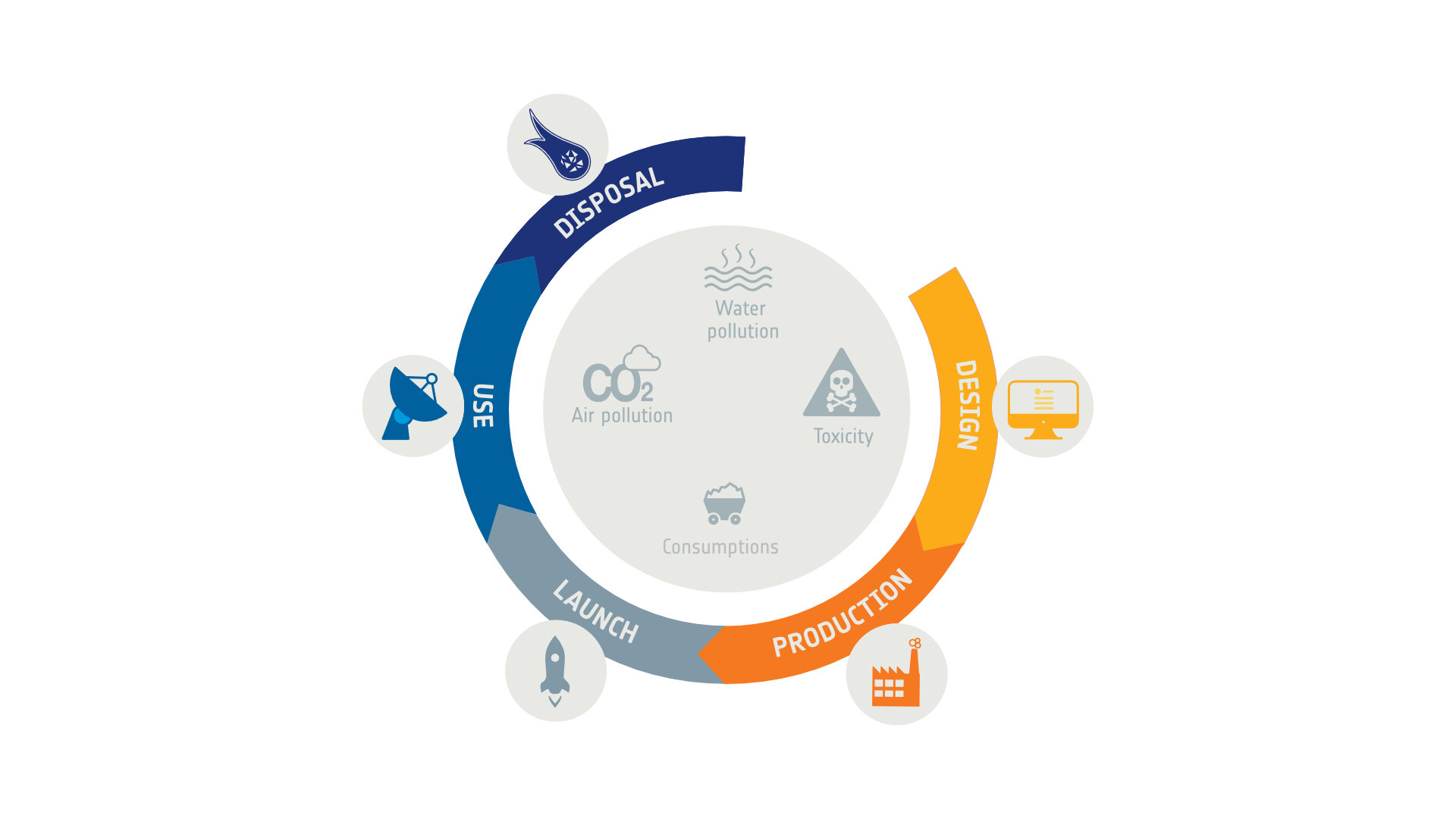CleanSat in 5 points:
- CleanSat pursues the development of technologies for Space Debris Mitigation
- ESA, system integrators and subsystem, and equipment manufacturers are involved in CleanSat with a coordinated approach
- ESA is making the European industry the worldwide leader in the sector by initiating the development of these technologies
- Cleansat works on innovative technologies in 3 main areas: Deorbiting systems, Design for demise, Passivation
- The budget required to mature high priority technologies up to qualification is 31.5 M€
Apply Space Debris Mitigation (SDM) measures is the most efficient way to reduce the risks raised by debris proliferation in the short and long term. International guidelines applicable to future missions in more than 20 countries worldwide, state that at the end of their operational lifetime spacecraft have to be passivated and removed from protected zones. The adherence to these guidelines is everyday more and more needed as today’s space debris environment poses a hazard to operational spacecraft, as well as to the safety of people and property on Earth.
CleanSat is a technology programme aiming at developing the necessary technologies to support the compliance of future satellites with Space Debris Mitigation requirements. The maturation of these technologies needs advancement in several technology fields.
- Deorbiting systems
Within 25 years from its end of life, a satellites has to be out of Low Earth Orbit (LEO) and Geosynchronous Earth Orbit (GEO) protected regions.
It can do so either by falling back into the Earth’s atmosphere and burning completely, or by moving into higher “graveyard orbits”. These End of Life (EoL) manoeuvres have important consequences on the satellite design. Large satellites may require to perform a reentry over a specific uninhabited area on ground (i.e. controlled reentry) with very significant changes to their propulsion system and spacecraft mass. Small satellites may have to include propulsion or other systems for reentry.
The evolution of the systems used for controlled reentry will allow to improve reliability and limit significantly the mass impact.
CleanSat proposes to adapt the monopropellant systems by developing repressurization systems, low cost engines and combined electric and chemical propulsion systems. Moreover the development of autonomous deorbit systems based on solid propellant are envisaged to promote the reentry even in case of failure of the satellite.
For small satellites, passive deorbit systems could be developed to avoid the inclusion of more expensive propulsion systems. Solutions like drag augmentation systems and electrodynamic or electrostatic tethers are being studied.
- Design for Demise
Satellites in LEO will eventually reenter the Earth’s atmosphere. Without specific measures, parts of these spacecraft may reach the ground and be hazardous if they fall on inhabited areas.
The intentional design of space hardware to burn up during atmospheric reentry is an attractive solution to limit the onground casualty risk. Design for Demise applies both at equipment and system level.
The identified critical equipment that must be redesigned in order to demise during an atmospheric reentry include: propellant tanks for chemical and electric propulsion, reaction wheels, magnetorquers, large mechanisms (e.g. Solar Array Drive Mechanisms) and optical payload elements. Technologies to promote the early exposure of satellite equipment to the external flow during the re-entry are necessary (e.g. breakup mechanisms and demisable joints for early breakup of external panels and equipment)
A European database on the characterisation of materials demisability will soon be made available.
- Passivation
One important aspect of satellites’ End of Life is the release of stored energy on-board at End-of-life to avoid breakup. Explosions of satellite batteries or propellant tanks have been a major source of debris in the past. Break-ups account for ≈ 35% of debris with a further 30% of debris from unidentified sources.
Passivation prevents satellite explosions by depleting stored energy in power and propulsion systems. Nonetheless, passivation operations are quite critical and have system level implications.
Propulsion system passivation is performed through the venting of the pressurant and propellant retained in the tanks at the End of Mission. It is proposed to develop fluidic passivation valves (compatible with propellants and pressurant) that are robust and reliable after a long orbital lifetime. Furthermore a characterization of reaction control thrusters for low inlet pressure would allow a better passivation.
Power system passivation is performed by discharging the batteries and by preventing their recharging after End of Mission. Battery characterization is necessary to define safe state of charge and possible design adaptations, and the upgrade of the current PCDUs design to allow the safe isolation of the Solar Array.

CleanSat, reshaping future satellites
In 2014, CleanSat called to action all three European Satellites Integrators as well as equipment suppliers in order to develop technologies for space debris mitigation avoiding duplication of activities and enabling optimal exploitation of the Agency’s resources.
By initiating the development of these technologies, ESA is opening new market opportunities for the European industry, and is helping it to become the worldwide leader in the sector.
It is currently estimated that several hundreds of satellites will be launched in LEO between 2016 and 2025. The share of LEO satellites potentially accessible to European Space suppliers in the next decade is assessed at about 90% of the total, i.e. ~ 3500 satellites by 2025, corresponding to a potential manufacturing market value of about 27 billion of euros.
Considering the number of launches, the market available to European Suppliers of SDM compliant technologies is in the range of several tens of M€.

Budget and Planning
The total estimation of the budget necessary to reach qualification (TRL8) is 74.5 M€. A strong prioritisation exercise was carried out considering the inputs from all stakeholders: ESA User programmes, Large and Small System Integrators, Suppliers.
Three different criteria have been taken into account:
- Contribution to compliance to SDM requirement
- Accessible market and ESA mission needs
- Maturity level and related time to market
Building Blocks have been categorised and the budget required to mature and qualify high priority technologies is 31.5 M€ (industrial costs, e.c. 2016).






Discussion: no comments